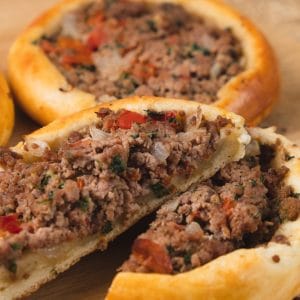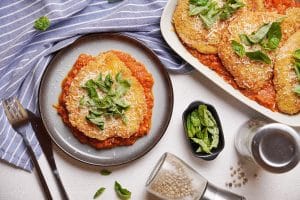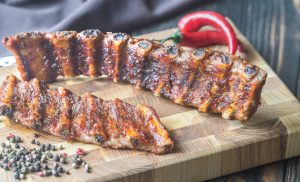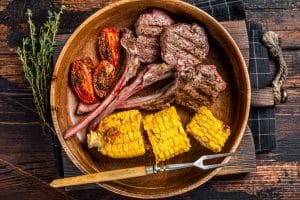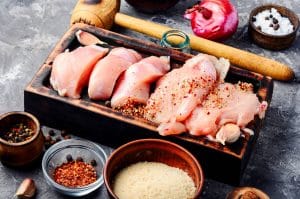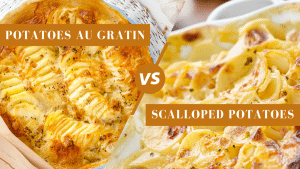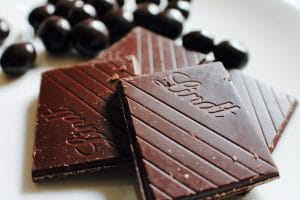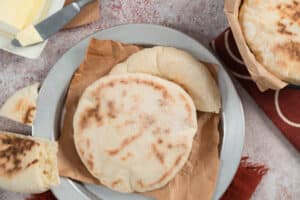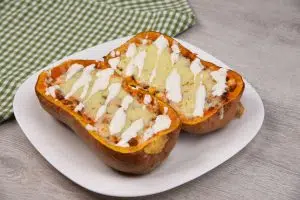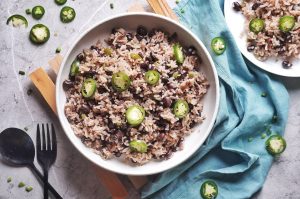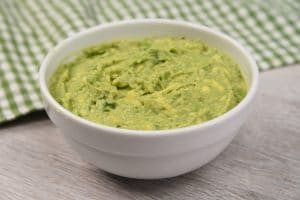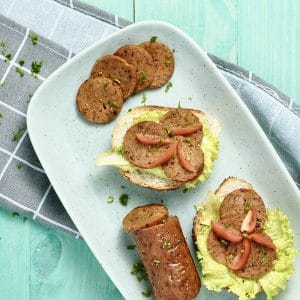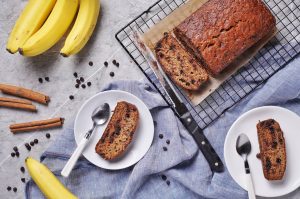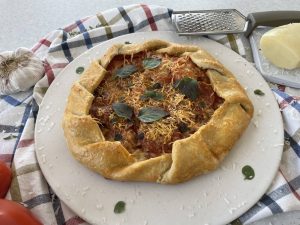Veal vs. Lamb: What’s The Difference?
Important Note: When you buy through our links, we may earn a commission. As an Amazon Associate we earn from qualifying purchases. Content, pricing, offers and availability are subject to change at any time - more info.
Unlike beef, veal and lamb aren’t common meats in the average household. Part of the reason is cost. Both are more expensive than beef or poultry.
Even if veal or lamb isn’t a regular on your shopping list, you might want to give them a try at home or during your next restaurant outing. So, let’s take a look at the differences between these two meats.
What Is Veal?
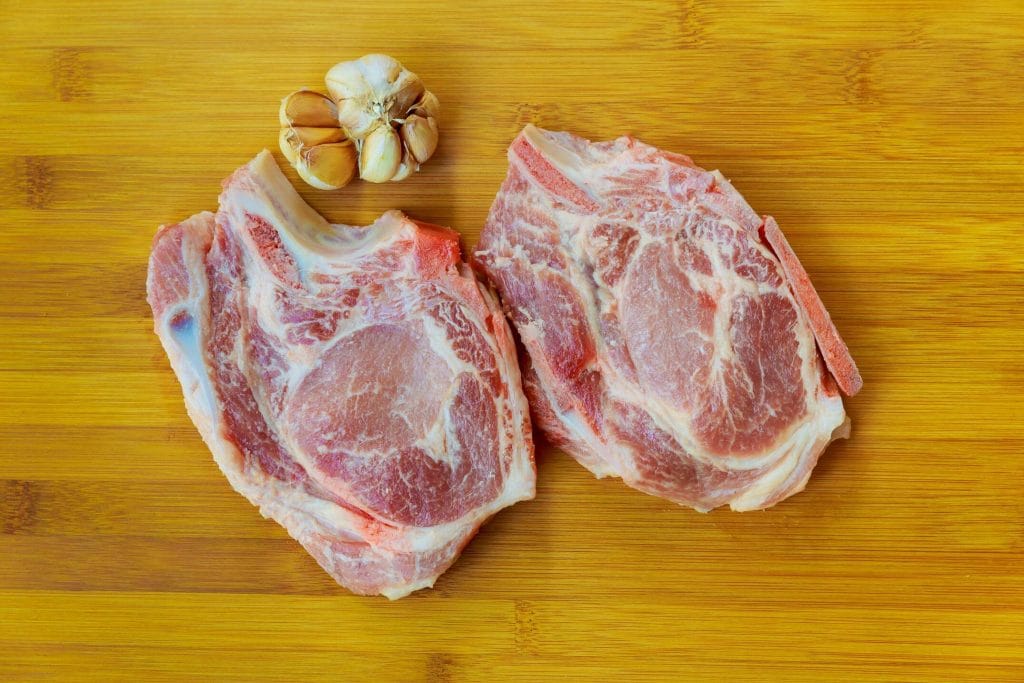
Veal is the meat from a milk cow’s young, usually male, calves. That alone puts people off from even touching the stuff. But it’s a way for milk farmers to add value to their livestock investments. Generally humanely raised, they’re fed whey, a milk byproduct, and grains.
Veal is lighter in color than beef and closely resembles the color of pork. The most common veal cuts are much like beef – rib, sirloin, shoulder, loin, leg, breast, and foreshank.
What Is Lamb?

Lamb meat comes from young sheep, i.e., lambs. Mutton is also from sheep but older ones. In the US, lamb, with its lighter, less gamey taste is preferred over mutton.
The most common cuts used in lamb (or mutton) are shanks, ribs, rack, neck, leg, sirloin, loin, breast, lamb, and flank. You’ll notice the meat has a pink or reddish hue.
What Does Veal and Lamb Taste Like?
Since the muscles are not developed fully in young animals, both veal and lamb have a more tender texture than beef. Veal has a mild beefy taste. On its own, it can be rather bland so spices, marinades and sauces are often used to add flavor.
Lamb has a much stronger flavor but unlike mutton, it’s rarely “gamey” tasting. It has a slight sweetness that’s delicious on its own.
Texture
Both lamb and veal are fine-grained and velvety. Veal is prized for its tenderness. Even the larger cuts of veal have a “melt in your mouth” quality.
Lamb is fattier with fat deposits around the perimeter or marbled within the meat. On chops, it’s fairly easy to remove but for other cuts, it contributes to juiciness when roasting or grilling.
Buying Lamb or Veal
American farmers produce most of the veal you’ll find in your grocery store, but Australia is more often the source for lamb. Grass-fed, Australian lamb is said to have a gamier taste than grain fed American lamb – but the gaminess is much milder than something like venison.
Choose lamb that’s light red or dark pink. Lamb that’s darker red is likely near it’s sell by date and though it’s perfectly safe, there’s a slight loss of flavor. Veal should be pink with any fat a bright white. For both, avoid grey-tinged meats or packages with a lot of juices underneath the meat.
Lamb’s most popular cuts are loin or rib chops, the latter often sold in “racks”. Bone in or boneless leg of lamb along with sirloin (highly marbled with fat), shanks (bones with a generous amount of meat and fat) and ground lamb are other cuts you’re most likely to find locally.
It might not be easy to find veal, but if you do, it’s likely to be a veal chop, ground veal, cutlets (thin slices or shanks. If you’re lucky, you may even find a veal roast.
Storing Lamb or Veal
As with all meats, refrigerate raw veal or lamb and use before the sell by date for best flavor. If you can’t cook it right away, wrap the original package in freezer wrap or place in a freezer bag. Get as much air out as possible to avoid freezer burn. Both will keep in the freezer for 6-9 months.
When defrosting frozen veal or lamb (in the fridge, of course), use within 3-5 days. The exception is for ground cuts which should be used within 2 days.
Cooking Lamb or Veal
Grill, stew, roast, sauté, braise – you name the cooking method and veal or lamb can handle it.
Most veal cuts are usually served medium rare with an internal temperature of 145F. It will be slightly pink in the middle. Ground veal should be cooked to at least 160F. When stewing or braising veal cuts, an internal temperature around 160F is common.
Classic veal dishes include Osso Buco, veal shanks braised in tomato sauce, Piccata (veal sauteed with lemon and butter) and Milanese (breaded cutlets). Obviously common in Italian dishes, it’s also used in a wide variety of cuisines including Asian (stir-fries), German (Weiner Schnitzel) and Indian (curries).
The recommended internal temperature for lamb is 145F (medium rare) but some actually prefer it rarer. With its high fat content, it’s hard to overcook lamb, but it can be done! Don’t exceed an internal temperature 170F.
Besides the classic chops, roasts, racks, and burgers, lamb is used in Shepard’s Pie and Moussaka (both mashed potato topped stews), tagines, curries and kabobs.
Nutrition
On average, lamb packs about 330 calories per 4 ounce serving while veal clocks in at 260 calories. Lamb has much more fat – a whopping 20-26 grams to veal’s 12-13 grams. Additionally, the fat in veal is less saturated, giving it a better “fat” profile.
While both have about the same amount of protein and B vitamins, lamb provides high amounts of vitamin K and iron.
Related Questions
In some countries, veal and lamb are used interchangeably in recipes due to availability and cost. However, the texture and taste will be different.
If you prefer mild and tender meat, go for veal. If you prefer a more robust flavor, lamb may be a better choice. However, veal is a leaner cut of meat so if the amount of saturated fat in your diet is a concern, it’s a good alternative to lamb or even beef. That doesn’t mean you can enjoy lamb now and then. Just limit your serving size.

